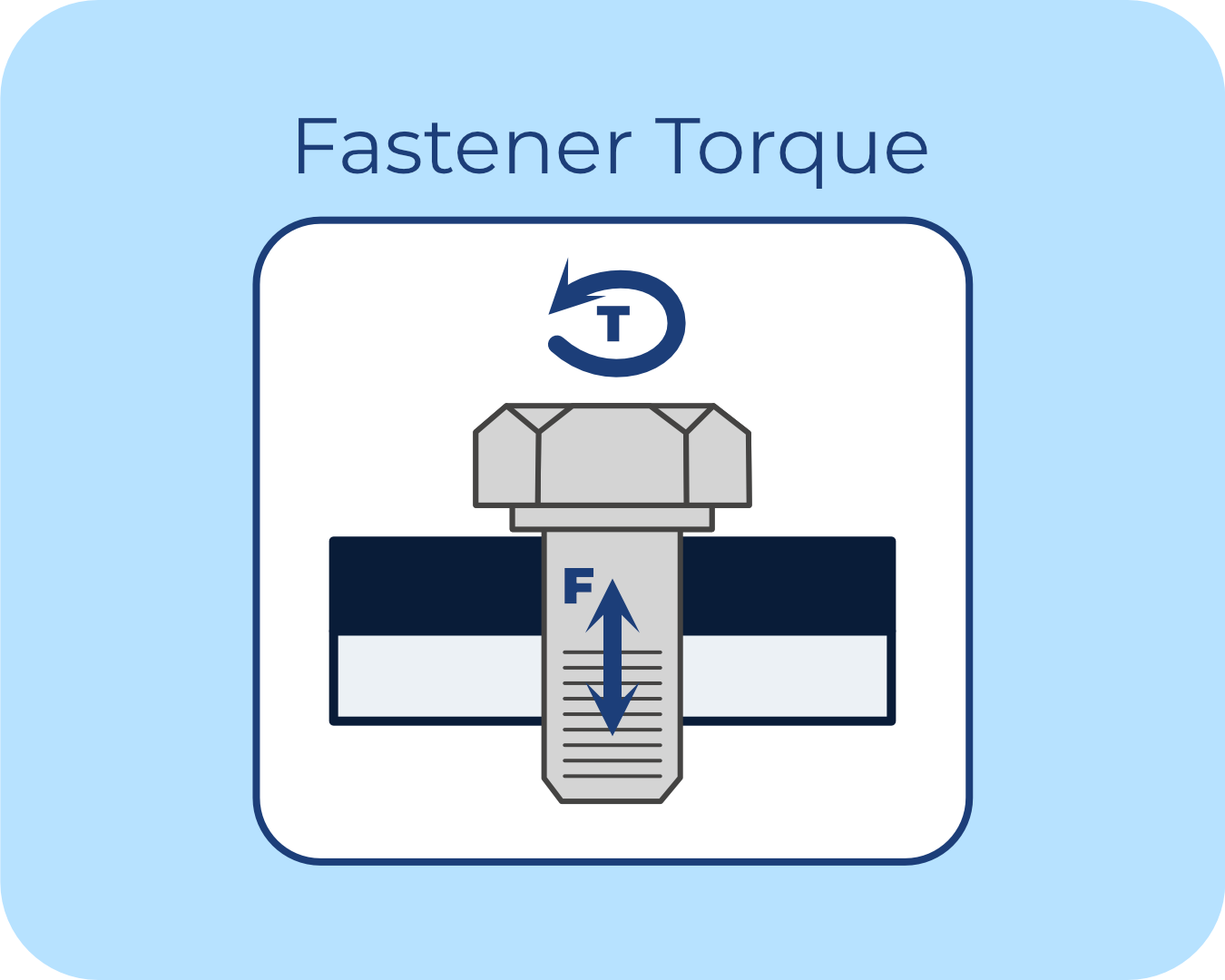
Fastener torque refers to the rotational force applied to a fastener (such as a bolt, nut, or screw) to tighten it. This torque ensures that the fastener holds two or more parts together securely without damaging the components or the fastener itself.

It is helpful to understand some fundamental concepts related to stress and strain prior to making any calculations or referencing torque tables in order to orient ourselves to a basic understanding of what torque is and what we are trying to accomplish by using it.
Note: This informational page should be viewed as a general introductory guide to fastener torque. It should not be used in place of professional engineering consultation or bolt design. Nickel Systems believes these values to be accurate and reliable in relationship to the purpose and nature of this blog post. Nickel Systems assumes no liability for any one who uses this blog post beyond its scope and purpose.
Below is a visual introduction to the diagram:
Stress refers to the internal resistance a material offers per unit area to an external force trying to deform it. Its equation is σ = F/A where σ is stress, F is force, and A is area. Note: Lb-Force is not the same as weight.
Strain pictorially shows how materials behaves under loading. Its equation is ε = ∆L / Lο where ε is strain, Lο is the original length, and ∆L is change in length either elongation or compression.
Elongation Curve is a graphical representation of how a material stretches in response to applied stress. It includes both elastic and plastic deformation phases.
Elastic Range is the portion of a material’s stress-strain curve in which the material behaves elastically meaning that it returns to its original shape when an applied load is removed. This represents reversible deformation.
Plastic Deformation is the permanent change in shape or size of a material when subjected to a stress beyond its elastic limit. Plastic deformation causes irreversible changes in the material’s structure.
Yield Point is the point at which material begins to deform plastically.
Yield Strength is the maximum stress level at which a material will begin to deform permanently.
Ultimate Tensile Strength refers to the maximum stress a material can withstand while being stretched or pulled before breaking.
Proof Load for fasteners can be found in published tables or by calculation. It most cases proof load is calculated by multiplying the minimum yield strength by the stress area and then by 92% .
Clamp Load is the axial force applied to a fastener (i.e. bolt or screw) to hold components together in an assembly. It’s typically a fixed force created by tightening the faster to a specific torque. The max clamp load should be approximately 75% of the proof load.
Fastener torque is important because there needs to be enough load applied to the bolt and nut to prevent it from loosening. This can lead to a loss in structural integrity of the unit. However, too much fastener torque moving beyond the elastic range will lead to permanent deformation of the bolt and nut. This can lead to damage and failure of the structural components as well.